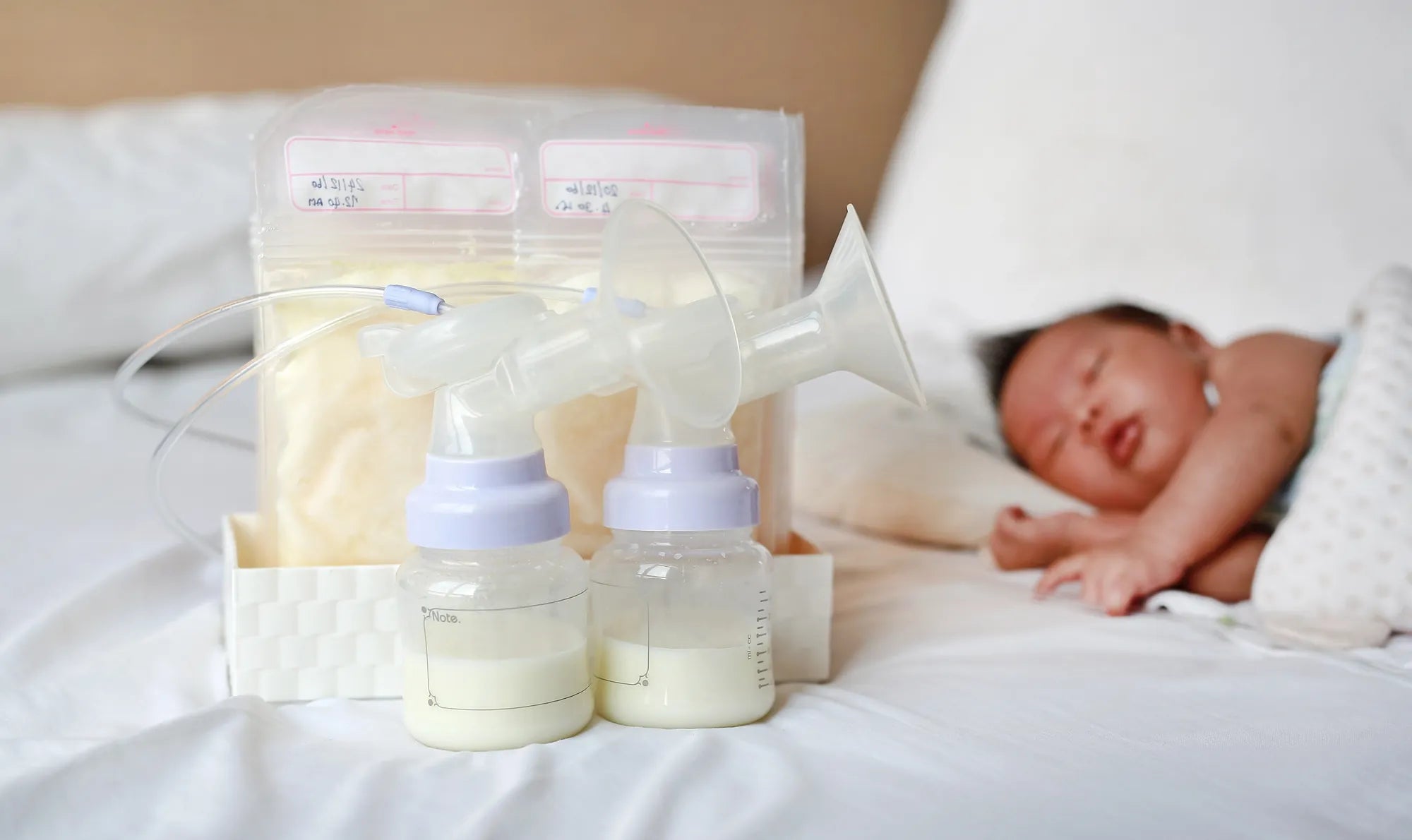Inicio
Pregnancy, Breastfeeding, and Pumping: The Ultimate Guide for Moms
Can I Pump Into Refrigerated Breast Milk? Everything You Need to Know

Can I Pump Into Refrigerated Breast Milk? Everything You Need to Know
When it comes to feeding your baby, breast milk is often considered the gold standard. But what happens when you need to pump milk and already have refrigerated breast milk on hand? Can you pump directly into refrigerated breast milk? This question is more common than you might think, and the answer is crucial for ensuring your baby's health and safety.
Understanding the Basics of Breast Milk Storage
Before diving into the specifics of pumping into refrigerated breast milk, it's essential to understand the basics of breast milk storage. Freshly expressed breast milk can be stored at room temperature for up to four hours, in the refrigerator for up to four days, and in the freezer for up to six months. However, these guidelines can vary depending on the temperature and conditions of your storage environment.
Can You Pump Into Refrigerated Breast Milk?
The short answer is yes, you can pump into refrigerated breast milk, but there are some important considerations to keep in mind. When you pump milk, it's typically at body temperature, around 98.6°F (37°C). If you add freshly pumped milk to refrigerated milk that's at a much lower temperature, it can cause the refrigerated milk to warm up slightly, potentially compromising its safety.
Safety Tips for Pumping Into Refrigerated Breast Milk
To ensure the safety of your breast milk, follow these tips:
- Cool the Freshly Pumped Milk: Before adding freshly pumped milk to refrigerated milk, cool it down in the refrigerator for about 30 minutes. This will help maintain the temperature of the refrigerated milk.
- Use Clean Containers: Always use clean, sterilized containers for storing breast milk. This reduces the risk of contamination.
- Label and Date: Clearly label and date each container of breast milk. This helps you keep track of how long the milk has been stored and ensures you use the oldest milk first.
- Avoid Overfilling: Leave some space at the top of the container to allow for expansion as the milk freezes.
Best Practices for Combining Breast Milk
Combining breast milk from different pumping sessions is a common practice, but it's essential to do it correctly. Here are some best practices:
- Same Temperature: Always combine milk that is at the same temperature. For example, mix refrigerated milk with other refrigerated milk, and frozen milk with other frozen milk.
- Small Batches: Combine milk in small batches to minimize the risk of contamination. This also makes it easier to manage and use the milk.
- Thawing Frozen Milk: If you need to thaw frozen milk, do so in the refrigerator or under cool running water. Never thaw milk at room temperature, as this can encourage bacterial growth.
Expert Advice on Breast Milk Storage
Experts recommend following strict guidelines when it comes to storing and handling breast milk. The Centers for Disease Control and Prevention (CDC) and the American Academy of Pediatrics (AAP) both provide detailed recommendations on breast milk storage. These guidelines are designed to ensure that your baby receives the highest quality nutrition without any risk of contamination.
Common Mistakes to Avoid
Even with the best intentions, it's easy to make mistakes when handling breast milk. Here are some common pitfalls to avoid:
- Leaving Milk Out Too Long: Freshly pumped milk should be refrigerated or frozen as soon as possible. Leaving it out at room temperature for too long can lead to bacterial growth.
- Reusing Leftover Milk: If your baby doesn't finish a bottle of breast milk, it's best to discard the leftover milk. Reusing it can introduce bacteria into the milk.
- Improper Thawing: Thawing breast milk in the microwave or at room temperature can create hot spots and encourage bacterial growth. Always thaw milk in the refrigerator or under cool running water.
Frequently Asked Questions
Here are some frequently asked questions about pumping into refrigerated breast milk:
- Can I add warm milk to cold milk? It's best to cool the warm milk before adding it to cold milk to maintain the overall temperature.
- How long can combined milk be stored? Combined milk should be stored based on the oldest milk in the batch. For example, if you combine milk that's been in the refrigerator for two days with freshly pumped milk, the combined milk should be used within two days.
- Can I mix milk from different days? Yes, you can mix milk from different days as long as it's at the same temperature and stored properly.
Final Thoughts on Pumping Into Refrigerated Breast Milk
Pumping into refrigerated breast milk is a convenient way to manage your milk supply, but it's essential to follow safety guidelines to protect your baby's health. By cooling freshly pumped milk before combining it with refrigerated milk, using clean containers, and labeling and dating your milk, you can ensure that your baby receives the best possible nutrition. Always consult with a healthcare professional if you have any concerns or questions about breast milk storage and handling.
Taking the time to understand the best practices for pumping into refrigerated breast milk can make a significant difference in your breastfeeding journey. With the right knowledge and precautions, you can provide your baby with the nourishment they need while maintaining peace of mind.
Compartir

